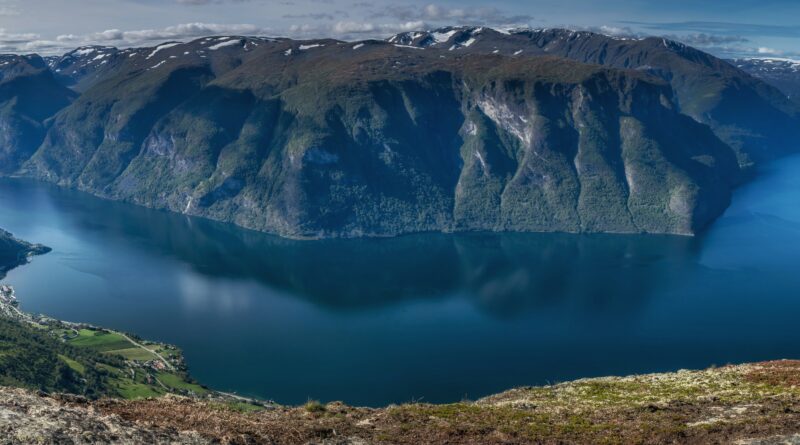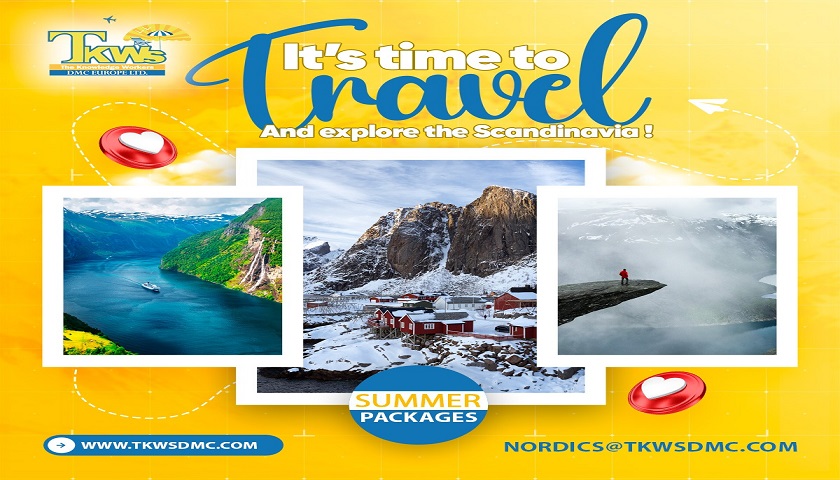Scandinavian Cities Fjords Cruise Tour A Nordic Adventure
Scandinavia — the enchanting northern realm comprising Norway, Sweden, and Denmark — offers travelers a sublime blend of vibrant cities, majestic fjords, and spectacular cruise routes. From the colorful streets of Copenhagen to the icy depths of the Geirangerfjord, this region is a playground for cultural explorers, nature lovers, and cruise enthusiasts alike.
This in-depth travel guide takes you on a journey through the top Scandinavian cities, the iconic fjords of Norway, and breathtaking cruises that connect them all. Whether you’re planning a once-in-a-lifetime Nordic escape or looking for travel inspiration.
Introduction to Scandinavia
Scandinavia is a land of contrasts: summer sun that never sets and winter nights lit by the aurora borealis; Viking history and cutting-edge design; bustling capital cities and vast unspoiled nature. Together, Norway, Sweden, and Denmark form a region that balances tradition and modernity with seamless elegance.
Scandinavia is best explored by combining city breaks with fjord adventures, and one of the most exciting ways to experience the region is by cruise — gliding past rugged coastlines, picturesque islands, and towering cliffs.
Top Scandinavian Cities to Explore
Copenhagen, Denmark: Cool and Cosmopolitan
Copenhagen is effortlessly stylish. From waterfront cafés and cycle lanes to royal palaces and world-class restaurants, the Danish capital is where modern design meets fairy-tale charm.
Must-See Attractions:
- Nyhavn: Colorful 17th-century harbor lined with restaurants and bars.
- Tivoli Gardens: One of the world’s oldest amusement parks.
- Rosenborg Castle: Home to Denmark’s crown jewels.
- The Little Mermaid Statue: A nod to Hans Christian Andersen.
Don’t Miss:
Try a canal tour from Nyhavn, dine on Nordic cuisine at Torvehallerne, and explore the cutting-edge Danish Design Museum.
Stockholm, Sweden: Venice of the North
Spread across 14 islands connected by bridges, Stockholm is scenic, historic, and incredibly clean. The blend of medieval architecture, lush green parks, and modern art makes the Swedish capital a joy to explore.
Highlights:
- Gamla Stan: The Old Town, with narrow lanes and historic buildings.
- Vasa Museum: Home to a perfectly preserved 17th-century warship.
- Royal Palace: One of Europe’s largest palaces still in use.
- Skansen: Open-air museum showcasing Swedish history and culture.
Insider Tip:
Buy a Stockholm Pass to access museums, boats, and public transport easily.
Oslo, Norway: Fjords Meet Modernity
Oslo is a city of nature and innovation. Surrounded by forests and fjords, the Norwegian capital blends eco-conscious urban living with a strong maritime heritage.
Top Sights:
- Vigeland Sculpture Park: An open-air museum of unique stone sculptures.
- Oslo Opera House: Striking architecture on the waterfront.
- Fram Museum: Tells the story of Arctic exploration.
- Akershus Fortress: A medieval castle with panoramic views.
Many fjord cruises begin in or pass through Oslo, making it an ideal launching point.
Bergen, Norway: Gateway to the Fjords
Often called the “Fjord Capital of Norway,” Bergen is a charming city framed by mountains and sea. With its colorful Hanseatic wharf and easy access to the fjords, it’s a cruise highlight.
Must-Visit Places:
- Bryggen Wharf: A UNESCO World Heritage Site.
- Floibanen Funicular: Panoramic views from Mt. Floyen.
- Fish Market: Fresh seafood and local delicacies.
Tip:
Use Bergen as a base for day cruises or fjord trips like the Næroyfjord or Sognefjord.
The Norwegian Fjords: Nature’s Masterpiece
Norway’s fjords are the soul of Scandinavian nature. Carved by glaciers over millennia, these deep, narrow inlets are surrounded by towering cliffs, thundering waterfalls, and picturesque villages.
Geirangerfjord: A UNESCO World Wonder
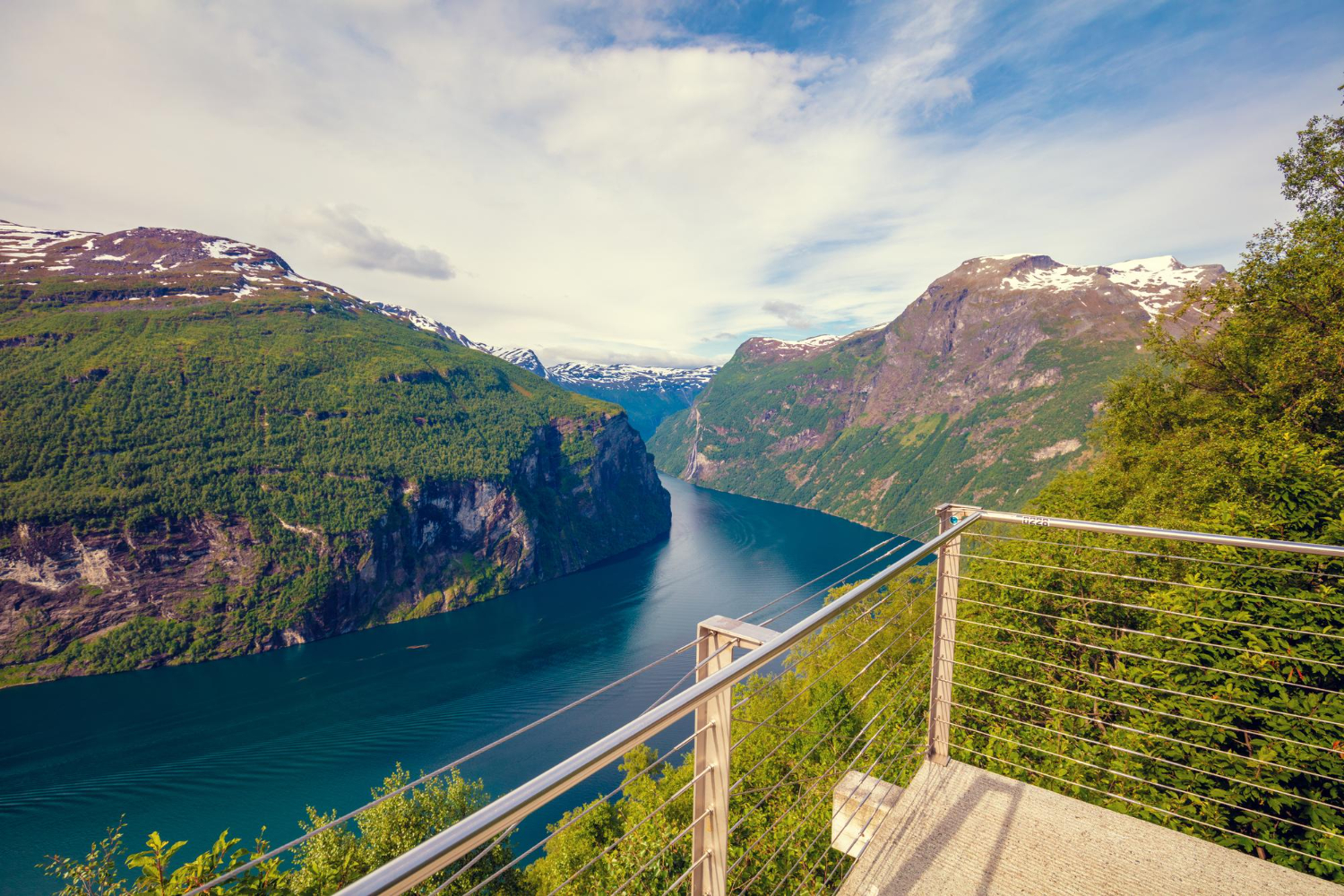
Tucked deep in the heart of More og Romsdal county, Geirangerfjord is perhaps Norway’s most iconic fjord — and for good reason. This UNESCO World Heritage site stretches about 15 kilometers from the quaint village of Geiranger to the mouth of Sunnylvsfjorden, cutting through towering mountain walls that rise over 1,000 meters above sea level.
The fjord is home to some of Norway’s most famous waterfalls. The Seven Sisters, The Suitor, and Bridal Veil cascade down the cliffs in ribbons of mist, especially vibrant during the spring melt. Local legends and folklore bring these waterfalls to life, weaving stories of lost love and rival families into the natural scenery.
Geirangerfjord’s remote, almost mythical beauty makes it a must-visit for nature lovers, photographers, and adventure seekers. You can kayak through its calm waters, hike along mountain trails with panoramic viewpoints like Flydalsjuvet, or drive the twisting Eagle’s Road (Ornevegen) for an unforgettable aerial view of the fjord. This fjord isn’t just a sight — it’s an experience that stays with you.
Arguably the most famous fjord in Norway, Geirangerfjord is a UNESCO site known for its dramatic beauty. Sail past Seven Sisters Waterfall and Eagle Bend, and stop at the tiny village of Geiranger.
Best Cruise Route:
Alesund to Geirangerfjord via Hurtigruten or local operators.
Næroyfjord: Norway’s Narrowest Fjord

For a more intimate, storybook experience, look no further than Næroyfjord — one of the narrowest fjords in the world and also a UNESCO World Heritage site. At its slimmest point, Næroyfjord is just 250 meters wide, with steep cliffs rising vertically on either side. It branches off from the larger Sognefjord and runs approximately 18 kilometers from Gudvangen to Bakka.
Despite its size, Næroyfjord packs in unparalleled beauty. Towering mountains, thundering waterfalls, and remote farms give it a secluded, enchanted atmosphere. Because there are no major roads cutting through its center, it feels untouched by time. You can explore it via silent, eco-friendly ferries, traditional boats, or even by paddle if you’re up for a tranquil kayak trip.
In winter, the fjord is a dramatic icy corridor; in summer, it becomes a green paradise. No matter the season, Næroyfjord captures the essence of Norway’s natural serenity. It’s no surprise that this fjord is often described as the most beautiful in the world.
Another UNESCO fjord, Næroyfjord is one of the narrowest in the world — only 250 meters wide in places. It’s a peaceful, almost mystical fjord with quaint farms and lush cliffs.
Tip:
Combine it with a Norway in a Nutshell tour from Bergen or Flam.
Sognefjord: The King of the Fjords
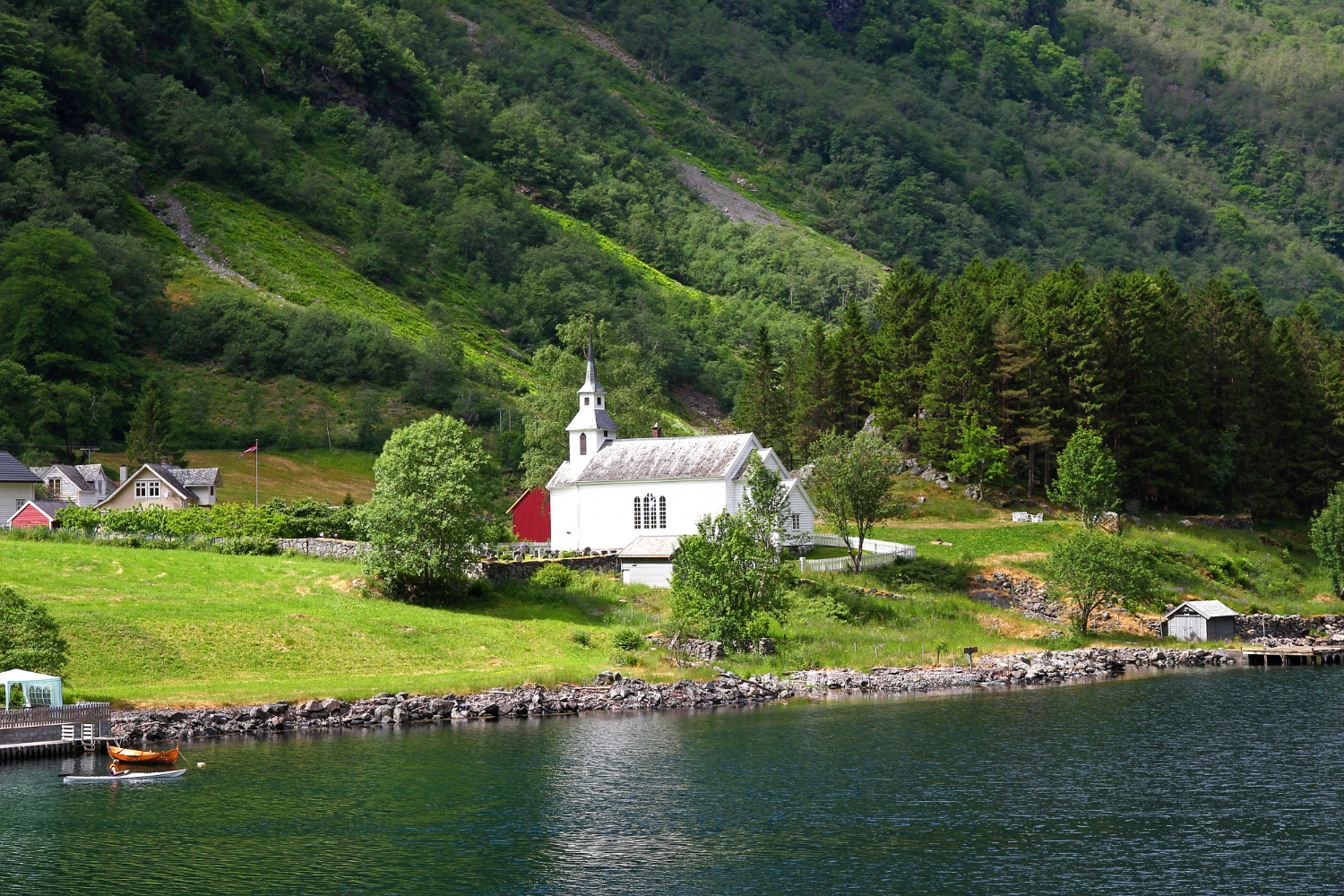
If Næroyfjord is Norway’s most intimate fjord, Sognefjord is undoubtedly its grandest. Nicknamed the King of the Fjords, Sognefjord is the longest and deepest fjord in Norway, stretching an astounding 205 kilometers inland from the coast near Bergen all the way to Skjolden. At its deepest point, it plunges to 1,308 meters — deeper than most parts of the sea floor.
This vast fjord system encompasses a wide range of attractions and landscapes. The village of Flam is a popular entry point, home to the world-famous Flam Railway, one of the steepest and most scenic train rides on Earth. Further in, the fjord reveals gems like the ancient Urnes Stave Church, a UNESCO World Heritage site, and the glittering arms of Fjærlandsfjord, Aurlandsfjord, and of course, Næroyfjord.
Outdoor enthusiasts will find endless opportunities here — from glacier hiking on Jostedalsbreen, to kayaking, mountain biking, or scenic road trips. Sognefjord also gives you access to Jotunheimen National Park, home to some of Norway’s tallest peaks. With its sheer scale, natural grandeur, and cultural depth, Sognefjord is not just a destination; it’s an immersive journey through Norway’s geological and human history.
The longest and deepest fjord in Norway, Sognefjord stretches over 200 km. Known as the King of the Fjords, it offers stunning views, cultural stops, and connections to glacier hikes.
Don’t Miss:
The Flam Railway — a steep, scenic train journey through mountains and waterfalls.
Hardangerfjord: The Romantic Queen
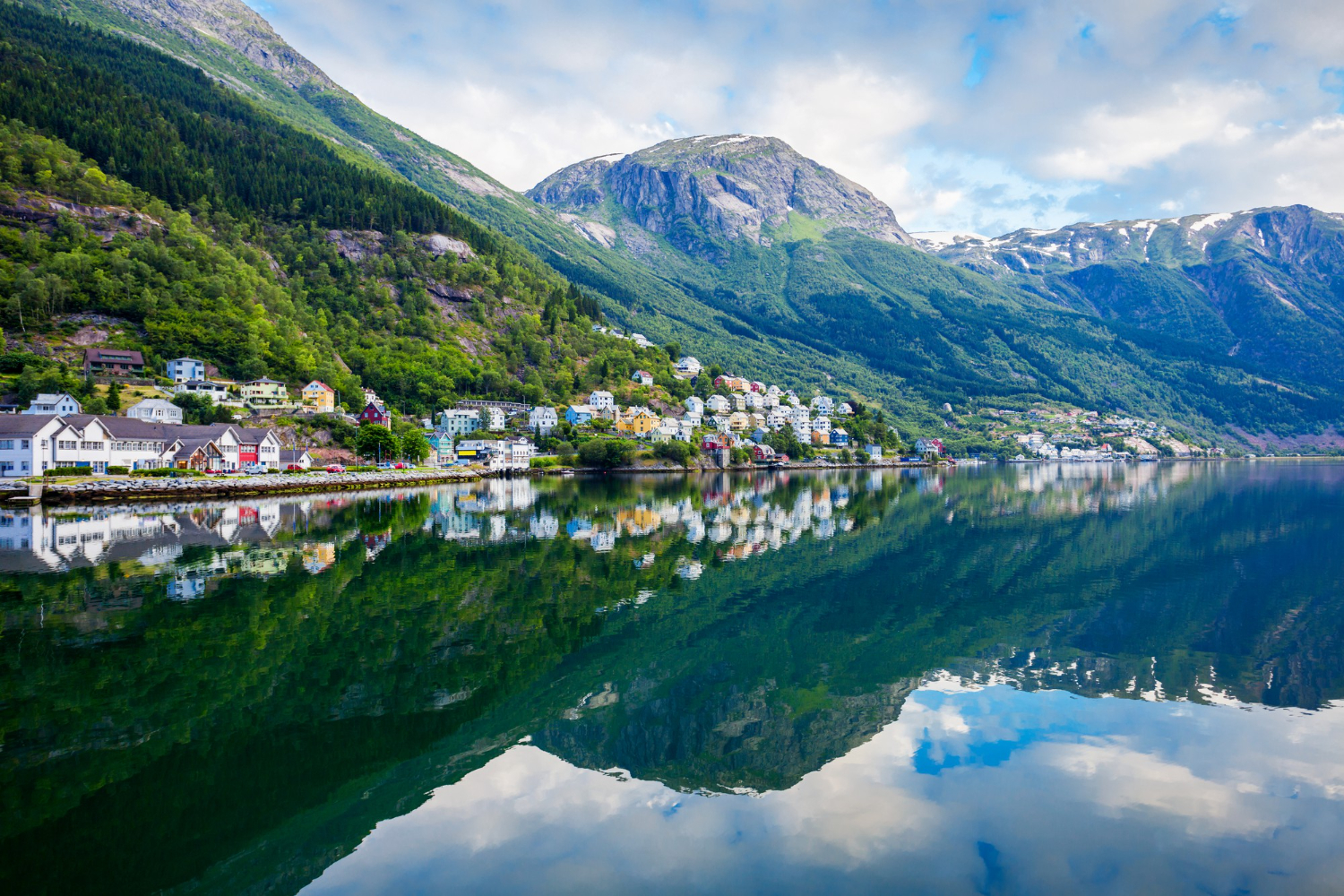
Where Sognefjord offers drama and scale, Hardangerfjord delivers grace, color, and calm. Often referred to as the Queen of the Fjords, this 179-kilometer-long fjord is Norway’s second-longest and stretches from the Atlantic coast near Bergen deep into the mountains of Hordaland.
Hardangerfjord is especially beloved for its springtime beauty. When the fruit orchards bloom — particularly in the towns of Ulvik, Lofthus, and Eidfjord — the hillsides come alive with pink and white blossoms, forming one of the most photogenic landscapes in the country. Apples, cherries, plums, and pears thrive in this microclimate, and visitors can even taste local ciders and juices made right on the farms.
Another highlight is the powerful Voringsfossen, a waterfall that drops 182 meters into the Måbodalen Valley. Easily accessible via the Hardangervidda National Tourist Route, it’s a great stop on a road trip through the region. Hiking enthusiasts can challenge themselves with a trek to Trolltunga — a jaw-dropping rock ledge hanging 700 meters above Ringedalsvatnet lake, offering one of the most dramatic photo ops in all of Scandinavia.
Hardangerfjord is where natural beauty meets culture and tradition. It’s peaceful, easily accessible from Bergen, and offers a softer, yet equally unforgettable, fjord experience.
Famous for its apple orchards and waterfalls, Hardangerfjord offers a blend of agriculture, hiking, and cruising. It’s especially beautiful in spring during the apple blossom season.
Northern Lights & Midnight Sun Cruises
- Best Time for Northern Lights: September to March
- Best Time for Midnight Sun: May to July
These cruises often include stops above the Arctic Circle in Tromso, Lofoten, or Nordkapp.
Travel Tips for a Scandinavian Cruise
- Book early in peak season (May–September)
- Layered clothing is essential — weather changes fast
- Currency: NOK (Norway), SEK (Sweden), DKK (Denmark) — many places accept cards
- Language: English widely spoken
- Tipping: Not obligatory but appreciated
- Pack waterproof gear even in summer
When to Visit Scandinavia
| Season | Highlights | Ideal For |
| Spring (Apr–May) | Blossoms, fewer tourists | Budget travelers, photographers |
| Summer (Jun–Aug) | Warmest, long days, festivals | Cruises, hiking, sightseeing |
| Autumn (Sep–Oct) | Fall colors, harvest festivals | Cozy vibes, cheaper rates |
| Winter (Nov–Mar) | Northern Lights, skiing, snow tours | Arctic adventures, Christmas markets |
Final Thoughts: A Journey beyond ordinary
A Scandinavian cruise tour combining lively cities and serene fjords is an experience that stirs the soul. You’ll taste fresh seafood in Bergen, marvel at ice-blue waterfalls from your ship’s deck, explore Viking museums in Oslo, and gaze in awe at the aurora over snow-covered mountains.
Scandinavia offers not just destinations, but stories — of nature’s power, human ingenuity, and timeless beauty.
So, whether you’re sipping coffee in Copenhagen or sailing through the Geirangerfjord’s misty cliffs, every moment in Scandinavia feels like a page from a Nordic fairy tale.

